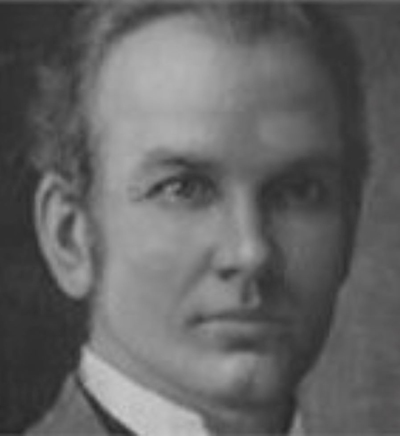
Edward Postell Porcher (1861-1939)
Inducted 1962
Highlights
Porcher Groves
Deerfield Grove Brand
Indian River & Lake Worth Pineaple & Orange Growers Association
North American Fruit Exchange
Florida East Coast Railroad
Stamp Patent
Clamp Truck
Alfred Benjamin Michael’s Orchid Island Groves
Bio
Porcher was born in October, 1861 in Greenville, South Carolina, to Francis Yonge Porcher of Charleston and his second wife, Susan Elizabeth Postell. He moved to Florida in June 1884 and stayed temporarily in Sharpes, until acquiring land for a citrus grove in Courteney a few months later. He established the Porcher groves and Deerfield Grove Brand Citrus there, and would eventually become the largest grower in Brevard County.
On December 15, 1885 in Charleston, South Carolina, he married Byrnina Mona Peck of Atlanta. His grove began on Merritt Island and eventually became one of the best known groves in the Indian River region, where he served as a general agent for the Indian River and Lake Worth Pineapple and Orange Growers association, Florida’s first citrus cooperative. Porcher also served in the organization of the North American Fruit exchange, a national marketing initiative. Also in the 1880s, after the passing of her husband, Porcher’s sister Julia Porcher and her son Laurance Porcher Allen came to live with him. Allen would work with Porcher and help built his thriving citrus company. Porcher originally built a packing house for his citrus at Courteney, but in 1910 he moved his packing operation to Cocoa, where it was temporarily handled at the Florida East Coast railway depot until a permanent building could be built two years later.
He was a pioneer in citrus packing and is known as the first packer to wash, inspect, grade, and stamp his fruit. He also holds many industry related patents. He patented the first fruit stamping machine and later turned the patent over to a citrus stamping company for extended use in Florida, Texas, and California. He invented a citrus washing machine. He also had basic patents for a clamp truck for handling packed boxes of fruit, which once improved were universally used in citrus packing houses.
In 1916 Porcher built a 10-bedroom house, designed by his wife, in Cocoa. The house was beautifully designed out of native coquina rock, and finished in the interior with teak, oak, and cedar. In 1917 Porcher’s Deerfield Grove Company consolidated with Alfred Benjamin Michael’s Orchid Island groves. Two years later Michael assumed full control of the company. However, Porcher still remained deeply involved in the community and the citrus industry. He continued working with the Indian River and Lake Worth Pineapple and Orange Growers association and the Florida State horticultural society. He established the first golf course at Cocoa and served as an officer until his death. His wife served as the first post-mistress of Merritt Island. The Porchers had two daughters, one son, and nine grandchildren.
After battling a long illness, Porcher died on June 19, 1939. He was buried at St. Luke’s Episcopal Church in Courteney, Florida. In the 1950s, the city of Cocoa purchased the Porcher house from the Porcher family and turned it into the City Hall. He was inducted into the Florida citrus Hall of Fame in 1962. Today the house is included on the National Register of Historic Places.
